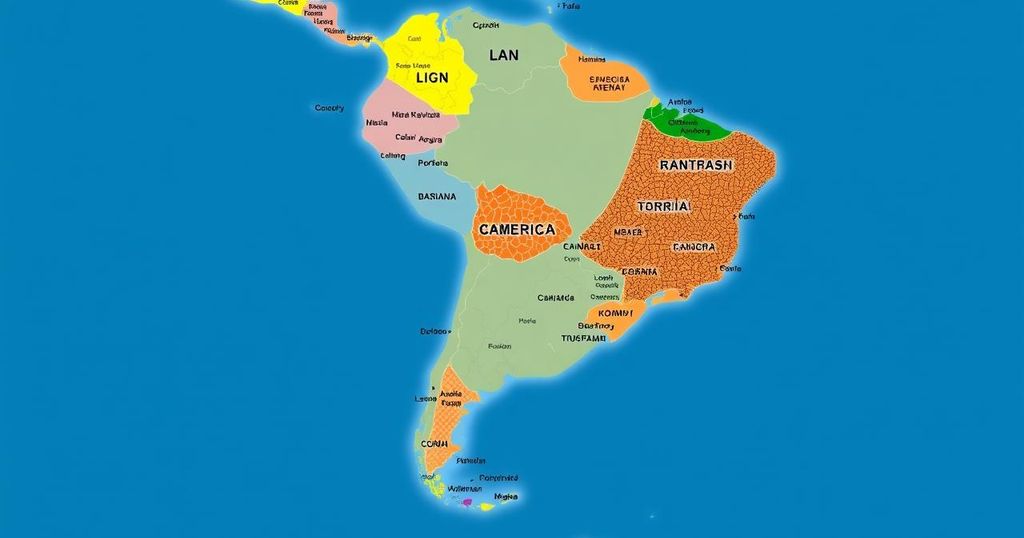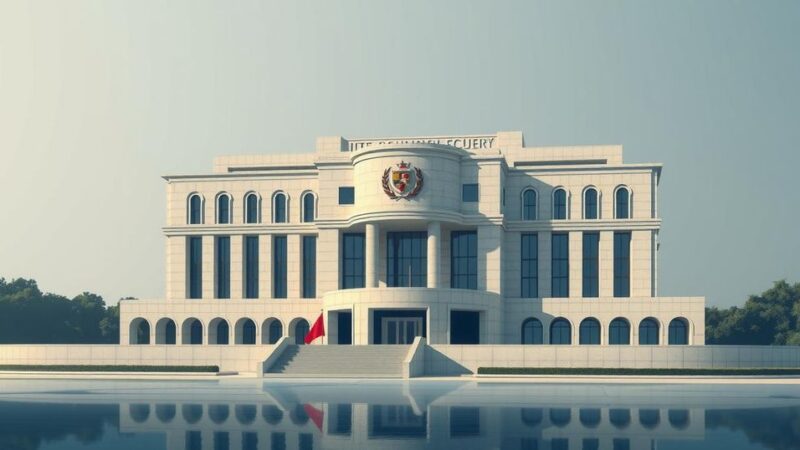The early 20th century in Latin America experienced both economic growth and political turbulence, particularly manifesting in the Mexican Revolution and global conflicts. The region became increasingly integrated into the world economy, leading to both boom and bust cycles. The effects of the Great Depression ushered in a wave of economic nationalism, influencing social structures and regional identities as urbanization and technological advancements progressed.
The early 20th century marked a period of economic growth and political stabilization across much of Latin America. However, this momentum encountered numerous challenges as the century progressed. While Mexico suffered significant political upheaval and economic decline during the Mexican Revolution beginning in 1910, other nations faced a range of internal and external issues, including population increases and the region’s deeper integration into the global economy. During World War I, Latin American countries reacted differently to the conflict. With Brazil aligning with the Allies, Mexico and Argentina sought roles in maintaining neutrality, largely due to their complex relationships with the United States. Despite minimal emotional involvement, all nations felt the impact of wartime disruptions that affected trade and investment. This was especially felt in Argentina, which saw trade decline dramatically as shipping was redirected and imported goods became scarce. Caught in this web, some Latin American nations experienced a postwar economic boom as they fulfilled the demands of the wartime powers, particularly notable in the sugar industry in Cuba. The economic landscape of Latin America shifted dramatically during the 1920s. An outward-directed growth strategy characterized this decade, evidenced by substantial foreign investment primarily from the United States, reaching $5.4 billion by 1929. However, reliance on foreign capital incited a nationalist pushback, leading to cultural nationalism among intellectuals and labor unrest against foreign firms. The worldwide economic depression that began in 1929 exacerbated existing nationalist sentiments, causing governments to impose tariffs and trade restrictions as foreign capital dwindled and export prices fell. The depression unexpectedly fostered domestic manufacturing growth, particularly in Colombia, which began surpassing even industrial leaders in textile production. Fast forward to 1945, the aftermath of World War II revealed a mixed picture regarding social change in Latin America. While some nations like Paraguay remained largely unaffected, overall population growth persisted, spurred by natural increases rather than immigration. Urbanization rose significantly, reaching 40% overall, indicating shifts within societal structures. Rural conditions were markedly different from urban life, with a growing industrial working class emerging, though many people remained disconnected from political developments due to lack of education. Despite these disparities, the spread of mass media, educational opportunities, and advancements in transportation began to unify the isolated populations, fostering both national markets and shared cultural identities. Railroads and highways expanded significantly, aided by the introduction of air travel, serving to connect previously isolated communities across the continent.
The history of Latin America through the 20th century is characterized by significant economic, political, and social transformations influenced by both internal dynamics and external pressures. This period saw various revolutions, independence movements, and the establishment of dictatorships that shaped national identities and governance. Economic growth was often challenged by global conflicts, resulting in a complex interplay between regional nations and world economies. Understanding these historical dynamics is crucial in grasping the forces that shaped modern Latin America.
In summary, the early to mid-20th century in Latin America was a period of considerable transformation influenced by economic booms, the impact of world events, and rising nationalism. While many countries navigated through challenges posed by foreign dependence and socio-economic disparities, significant strides in education, urbanization, and transportation contributed to evolving national identities. The development of a more interconnected society laid the groundwork for the subsequent political and social movements that would continue to shape the region into the modern era.
Original Source: www.britannica.com






